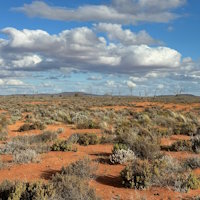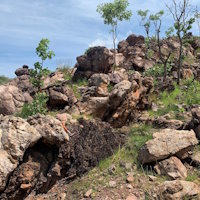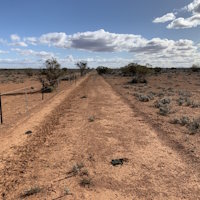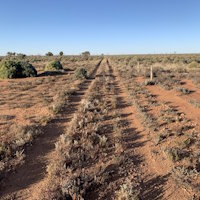Pirie Basin Project
Overview
The Pirie Basin Project covers 1,100km2 of one of the most highly prospective basins in South Australia and is adjacent to Alligator Energy’s (ASX: AGE) Samphire Uranium Deposit.
The Pirie Basin is one of only two basins in South Australia to host sedimentary-style uranium deposits that have active advanced staged feasibility or producing in-situ recovery uranium projects.
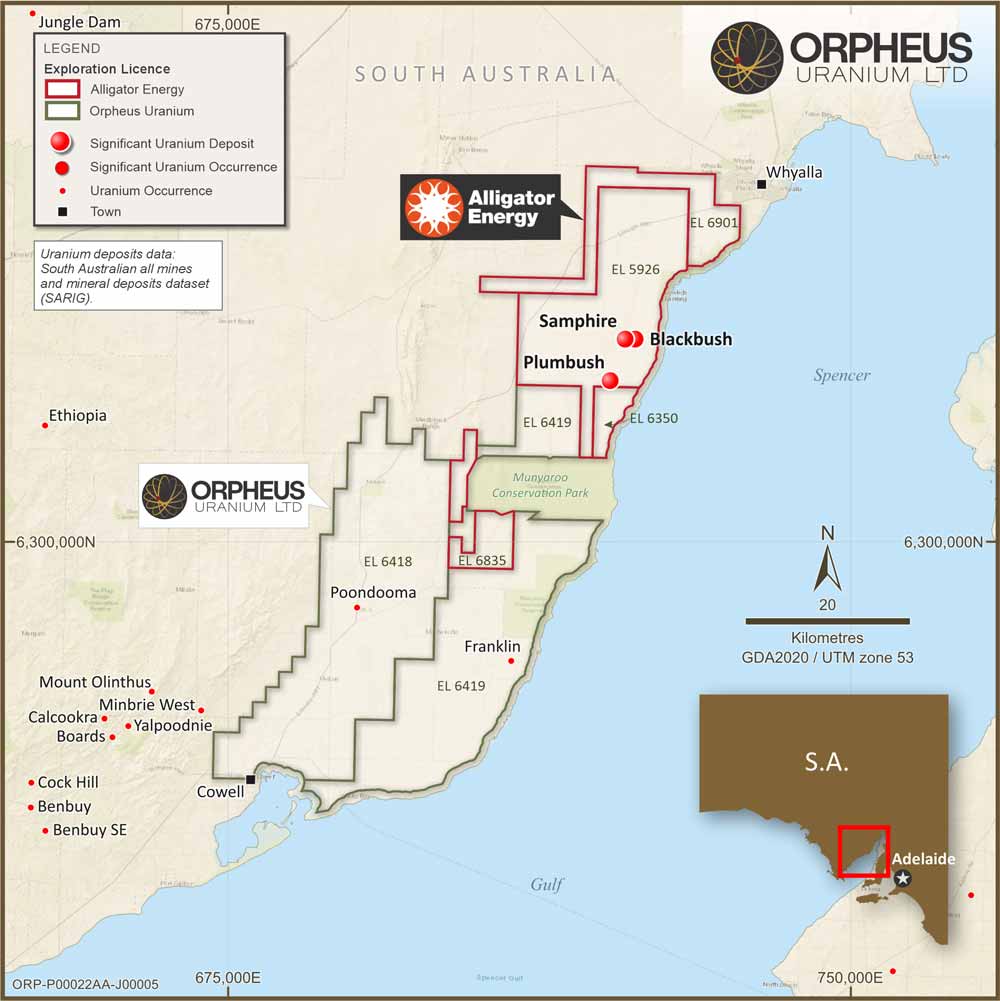
Figure 1: Pirie Basin Project and nearby Uranium deposits
Prospectivity
The tenement package is poised for discovery as it hosts sediments of the highly prospective Pirie Basin underlain by fertile source rocks of the highly uraniferous Gawler Craton Hiltaba Suite Granites.
Geology
The Pirie Basin, located on South Australia’s Eyre Peninsula, is an underexplored Teritary sedimentary basin with significant potential for uranium resources. Geologically, the Pirie Basin unconformably overlies the broader Adelaide Geosyncline, which is composed of Paleoproterozoic to Mesoproterozoic crystalline basement rocks and early Mesoproterozoic intrusives (see Figure 2). The latter includes members of the Proterozoic Hiltaba Suite Granites, the presence of which serve as ideal uranium source rocks within the surrounding region.
The overlying sediments comprising the Pirie Basin are considered promising hosts for uranium mineralisation due to favourable lithologies and variations in redox conditions. Sediments of the basin, in particular the Kanaka Beds provide a permeable sedimentary medium to allow the transport of mobilised uranium from the structural complex underlying Proterozoic basement rocks. The lithological composition of interbedded sands, carbonaceous siltstone, shale, and lignite, offer conditions conducive to uranium accumulation, especially where they unconformably overlie the uranium-bearing granitic source rocks.
Regional deposit scale data confirms the Pirie Basin as one of the most prospective basins for uranium mineralisation within South Australia. A recent technical review of historical data indicates the uranium potential to extend beyond what is currently defined in the northern part of the basin. With its underexplored nature and favourable geological settings, the acquired tenure remains a highly promising target for future uranium exploration and potential greenfield discoveries.
Exploration
The geological setting of the tenure presents opportunities for a range of commodities, including uranium, copper, gold, iron, graphite, and zinc. Consequently, the commodities sought within the tenure have historically varied, leading to the application of different geological, geochemical, and geophysical techniques. As a result, more detailed and advanced exploration activities have been carried out, often within localised geological settings specific to the target commodity, with the drill hole types and locations reflecting these variations (see Figure 9).
Remarkably, although the tenure contains a geological setting conducive to uranium mineralisation, there has been limited sustained systematic exploration for the commodity over time. Between 1978 and 1980, CRA Exploration carried out preliminary targeting and drilling for uranium in the western portion of the acquired tenement package. Despite a two-year drilling program and ongoing interpretation, the lack of significant uranium findings, coupled with a decline in uranium prices, led to the cessation of exploration activities and the relinquishment of the tenure, even though favourable geological settings and redox conditions had been identified.
When the uranium market rebounded in the mid to late 2000s, the tenement had been subject to continuous non- uranium exploration. The discovery of what is now the Samphire Uranium Project in 2007 sparked renewed interest in uranium exploration within the area. As a result, in 2010 Renaissance Uranium (subsequently Renascor Resources Ltd) entered into a joint venture with the tenement holder and conducted a series of regional drill holes, some of which also targeted basement mineralisation. However, due to global events and a sharp decline in uranium prices in 2011, uranium-focused exploration activities were halted, and Renascor subsequently refocused on the development of a nearby graphite project.
During the subsequent uranium downturn, Fortescue, a non-uranium exploration company, acquired the tenure in 2019. Since then, despite a positive upturn in the global uranium market, Fortescue’s focus on non-uranium commodities has meant that no uranium-focused exploration has occurred, even during a time of renewed prospectivity, particularly with the ongoing development of the Samphire Uranium Project.
As a result of the tenure’s history, systematic uranium exploration has been limited, especially since the economic potential of the Pirie Basin for uranium has become more apparent and the general targeting for sedimentary-style uranium mineralisation has evolved.
Fortunately, as the area has remained prospective for other commodities during the uranium downturn, data acquisition has continued. This has led to the collection of valuable datasets, including Fortescue’s regional gravity data, as well as downhole geological and geochemical data, providing a significant dataset from which insights can be drawn for the systematic exploration of uranium within the tenure.
Potential for Discovery
The geological setting of the acquired tenements could be considered one of the most favourable settings for sedimentary-style uranium mineralisation within South Australia. The region contains all the essential components required for the formation of these types of deposits. This includes the presence of the widely distributed source rocks, favourable sediments that act to transport the potential mobilised uriniferous fluids along with geochemical conditions that are conducive to the concentration of uranium. These elements, when combined, create an environment where uranium can accumulate and be preserved in economically viable quantities.
A key indicator of the basin’s potential is Alligator Energy’s Samphire Uranium Project, which lies less than 20 km from the northern boundary of the acquired tenure. Alligator Energy’s success in the region underscores the area’s fertility, as their project has demonstrated significant uranium mineralisation at what is potentially economic grades.
Moreover, the scale of not only the Samphire Uranium Project, but other sedimentary-style Uranium deposits in South Australia, reinforces Orpheus’ confidence in the prospectivity and potential for economic uranium mineralisation in this area. The footprint of mineralisation within other economic projects suggests that there may be additional, previously unrecognised deposits within this acquired tenure. Historical drilling in the area may have missed these potential deposits, either by not drilling deep enough or by passing over mineralised zones or redox fronts that were not fully understood at the time.
Orpheus’s ability to capitalise on this opportunity is greatly enhanced by its internal expertise in sedimentary-style uranium systems. This specialised knowledge, combined with a detailed understanding of the basin’s geological characteristics, allows Orpheus to interpret historical data and acquired information in a way that maximises exploration efficiency. By leveraging both the historical drilling data and new geological insights, Orpheus is well- positioned to identify key areas where further exploration could lead to a major discovery.

URANIUM PROJECTS
South Australia
South Australia
Northern Territory
South Australia
South Australia and NT
